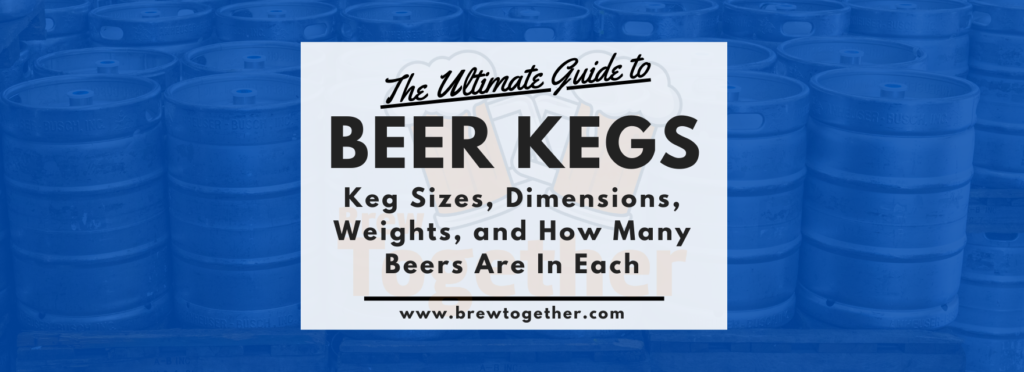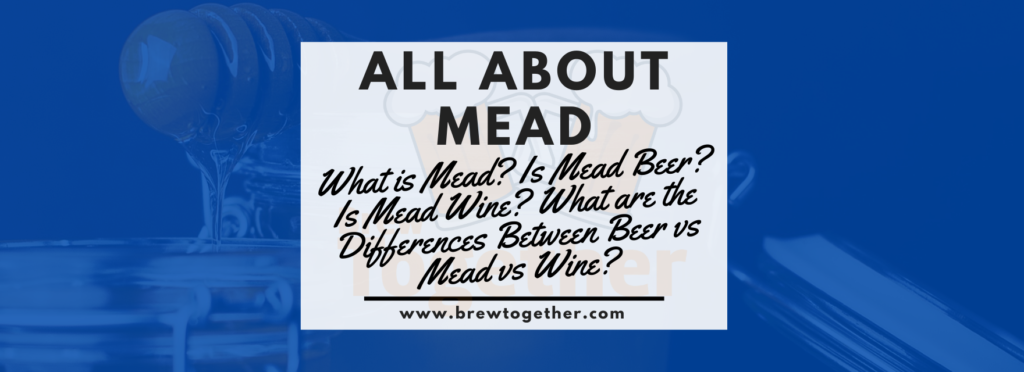Simple and Easy Homebrewed Hard Cider Recipes from Apple Juice


I’m going to admit something that may surprise you: I’m not ALWAYS in the mood for a beer. As I have mentioned before, I’m a big believer in keeping a non-beer homebrew option on tap. It’s a great way to add some variety to your lineup and it allows people who don’t drink beer to be included. Sometimes it’s also just nice to have a glass of something a little different. In fact, I’m in the process of building a second larger keezer for my beer so that I can keep 3 kegs of non-beer options on tap at home in my smaller one. There are many non-beer options available for homebrewing (try this hard lemonade recipe!), but you can’t do much better than a good homebrewed hard cider.
Cider making, like homebrewing in general, can be as simple or as complex as you want it to be. For the purpose of this article, we discuss the easiest method of cider making for beginners. This approach requires as little specialized equipment as possible, however I’ll admit up front that I find homebrewed cider, especially sweetened and carbonated cider, to be much easier to keg as opposed to bottling. If you’re bottling, don’t give up yet, though! We will give you some options for how to bottle this cider below.
One of the most important things to note when making a simple, cheap cider from store-bought apple juice is preservatives. The juice you buy must be 100% preservative free apple juice. Any preservatives added to the juice will kill the yeast and prevent fermentation. Check the ingredients label for any preservatives, especially potassium sulfate or or sodium benzoate, which are often added as stabilizers. Generally, any juice marked as pasteurized is safe, and juice with vitamin C or ascorbic acid listed in the ingredients is fine as well.
Guava Cider Recipe
As I mentioned in another article, my personal experiments with homebrewed cider have been a bit hit and miss, so while we always recommend you experimenting and trying new things, it may be worth dialing in the flavors you like first. So, before you run out to buy an orchard and an apple press, try this simple, cheap, and delicious Guava Apple Cider recipe:
Ingredients
- 4 Gallons Pasteurized Apple Cider or Juice (Make sure there are no preservatives in it! )
- 4 Containers Goya Guava Nectar (2 in fermentation and 2 for backsweetening)
- 2 12oz Containers Apple Juice Concentrate (Frozen) (For Backsweetening)
- 1 Packet Nottingham Ale Yeast (or other yeast you prefer. I have had great luck with Nottingham leaving an apple flavor behind after fermenting completely dry, but champagne yeast works as well).
Process
- Add the 4 gallons of pasteurized apple cider or juice and 2 containers of the guava nectar to a sanitized carboy.
- Pitch the yeast according to the instructions on the packet.
- Ferment for approximately 21 days. Fermentation will be rapid for a few days and then slow for a couple of weeks. Ferment completely dry.
- Once fermentation has stopped and you have taken a gravity reading to make sure it’s done, you’re ready to keg the cider (if you don’t keg, jump down a few paragraphs to the bottling instructions).
- Rack from carboy into cleaned/sanitized keg.
- Add 1/4 tsp to 1/2 tsp of Potassium Metabisilfite to the keg. Purge the headspace from the keg with Co2 and cold crash.
- Wait 24 hours.
- After 24 hours, add 2.5 tsp of Potassium Sorbate. You need to wait the 24 hours so that you have some sulfite in the cider before you add the sorbates or you will end up with some off flavors. Purge the headspace in the keg a couple of times with Co2 and cold crash.
- Wait 3 days.
- After 3 days, backsweeten with 1-2 containers of thawed frozen apple juice concentrate (to taste) and 2 containers of the Goya Guava Nectar.
- Seal and purge the airspace in the keg, then put it under pressure to begin carbonation. I just carbonated it slowly at about 10-12 psi, which worked perfectly for it.
- It’s drinkable pretty much immediately, but if you can wait 3-4 weeks it will improve substantially in flavor. You may have sediment settle at the bottom of your keg. If you find the first pint is a slushy ugly pink mess, pull another pint or two before worrying too much – I had to pull about 20 oz before it got to the good stuff.
- Enjoy
Fall Spiced Cider Recipe
This variation on a simple cider recipe adds medium sweetness along with fall spices like cinnamon and nutmeg, making it perfect for fall!
Ingredients
- 4.5 Gallons Pasteurized Apple Cider or Juice (Make sure there are no preservatives in it! )
- 3 12oz Containers Apple Juice Concentrate (Frozen) (For Backsweetening)
- 3 cinnamon sticks
- 3/4 tsp nutmeg
- 1 Packet Nottingham Ale Yeast (or other yeast you prefer. I have had great luck with Nottingham leaving an apple flavor behind after fermenting completely dry, but champagne yeast works as well).
Process
- Add the 4.5 gallons of pasteurized apple cider or juice to a sanitized carboy.
- Pitch the yeast according to the instructions on the packet.
- Ferment for approximately 21 days. Fermentation will be rapid for a few days and then slow for a couple of weeks. Ferment completely dry.
- Once fermentation has stopped and you have taken a gravity reading to make sure it’s done, you’re ready to keg the cider (if you don’t keg, jump down a few paragraphs to the bottling instructions).
- Boil 1-2 cups of water with the cinnamon sticks and nutmeg and allow it to cool.
- Once cooled, remove the cinnamon sticks and add the spiced water to the cider.
- Note: If you do a secondary fermentation, add the spices when you rack to secondary.
- Rack from carboy into cleaned/sanitized keg.
- Add 1/4 tsp to 1/2 tsp of Potassium Metabisilfite to the keg. Purge the headspace from the keg with Co2 and cold crash.
- Wait 24 hours.
- After 24 hours, add 2.5 tsp of Potassium Sorbate. You need to wait the 24 hours so that you have some sulfite in the cider before you add the sorbates or you will end up with some off flavors. Purge the headspace in the keg a couple of times with Co2 and cold crash.
- Wait 3 days.
- After 3 days, backsweeten with 3 containers of thawed frozen apple juice concentrate (to taste).
- Seal and purge the airspace in the keg, then put it under pressure to begin carbonation. I just carbonated it slowly at about 10-12 psi, which worked perfectly for it.
- It’s drinkable pretty much immediately, but if you can wait 3-4 weeks it will improve substantially in flavor. You may have a small amount of sediment settle at the bottom of your keg, which will be gone after the first pint or so is pulled.
- Enjoy!


Bottling Homebrewed Cider
If you don’t keg, this is where things get a little complicated. When you bottle homebrew, you rely on the yeast to carbonate your beer in the bottles by adding a small amount of fermentable sugar and letting it ferment in the sealed bottle, which produces Co2 that carbonates the beer. The problem is that because you’re adding sugar and juice to sweeten the cider, you’ll end up with bottle bombs if you don’t stabilize before bottling or pasteurize the bottles after a few days. I don’t generally recommend pasteurizing bottles, as it can be a dangerous process and the results can vary a lot. That’s not to say that other people don’t recommend it or that it isn’t possible, just that it makes me nervous.
If you’re determined to bottle your homebrewed cider, you have a few choices:
- Use priming sugar to bottle just like you would with a beer, and add non-fermentable sweeteners to sweeten.
- Backsweeten, bottle, wait a few days, pasteurize. I don’t recommend this.
- If you like the flavor right out of the fermenter (unsweetened, with less of a lemonade flavor), you can go ahead and bottle it as-is without adding the sabilizers or sweetener. It will be still (uncarbonated) and unsweetened. When you open a bottle, you can mix it with some apple juice concentrate, but this to me defeats the purpose of having brewed it in the first place.
- If you want it carbonated but not sweetened, you can skip the stabilization process above and use priming sugar to bottle just like you would with a beer.
- If you want it sweetened but not carbonated, then follow the stabilization process above, then sweeten, and then bottle. Even though we have hopefully stopped all of the yeast from reproducing, I would recommend cold crashing the bottles and keeping them cold as you drink them to avoid any accidental glass explosions. Having been woken up by a case of bottled homebrewed cider exploding all over my kitchen, I can tell you it’s not worth it!
Using Non-Fermentable Sweeteners
There is one other option for those who want to bottle a carbonated and sweetened cider: non-fermentable sweeteners. Use of a non-fermentable sweetener allows you to use fermentable priming sugar to carbonate in the bottle without the fear of excessive refermentation creating bottle bombs. There are several options for both natural and artificial non-fermentable sweeteners that can be used in cider with varying effects:
- Xylitol/Erythritol are naturally occuring sugar alcohols, which are often derived from corn cobs or birch. Sugar alcohols, and Xylitol in particular, are considered to be the best non-fermentable sugar for sweetening cider because it leaves the least aftertaste and sweetens the most similarly to sugar. Use about 3 tbsp per gallon for a semi-dry cider, or up to 9tbsp for a sweet cider. Use caution, though, because sugar alcohols can have a laxative effect, especially in larger quantities. Xylitol is also extremely toxic to dogs! Make sure your four-legged assistant brewers are kept away from both the xylitol during the brewing process and from the resulting cider.
- Stevia is a naturally-derived sugar substitute that is very sweet, but not quite the same type of sweet as sugar. It works better than lactose or artificial sweeteners, but not as well as Xylitol in my opinion. Stevia comes in both powder and liquid drops, and either works fine as a non-fermentable sweetener for cider.
- Lactose, sugar derived from cow’s milk, is a non-fermentable sugar more commonly used in beer. It is not very sweet compared to sugar, so it takes a large quantity of lactose to sweeten a cider. Lactose changes the mouthfeel of the cider more than the sweetness, which is generally undesirable (think milk and apple cider together – yuck). Definitely don’t add more than a pound of lactose to a five-gallon batch of cider, or you’ll notice some off flavors.
- Artificial sweeteners, such as aspartame, saccharin, and sucralose, are not recommended. They impart a bitter, unpleasant aftertaste, and the health concerns associated with artificial sweeteners outweigh the benefits of using them in a cider. There are plenty of other choices, so avoid these!
One great thing about these sweeteners is that you can test them in advance. Bottle a small batch of carbonated but unsweetened cider and allow it to condition. Once it’s ready, you can slowly add sweetener to taste in a pint glass and once you have found the desired flavor and sweetness, you can scale it up for your next batch before bottling.
Thanks for Stopping By!
These recipes are obviously quite similar, and you can experiment with any flavor you can imagine! One of the easiest ways to do so is to just ferment 4 gallons of cider, stabilize, and then backsweeten with one gallon of any juice of your choosing. Don’t be afraid to experiment!
What are your favorite cider recipes, yeasts, or additions? Leave a comment below or post in the forums to join the conversation!
Thank you for reading! It would mean the world to us if you would share this article with your friends using the share buttons below!
If you’re not a member of BrewTogether, we’d love for you to join! BrewTogether is completely free, and signing up is easy! Click here to join!
Affiliate Disclosure: BrewTogether is a participant in the Amazon Services LLC Associates Program, an affiliate advertising program designed to provide a means for us to earn fees by linking to Amazon.com and affiliated sites. BrewTogether is also a participant in an affiliate program with MoreBeer, our favorite online homebrewing equipment/ingredients retailer. Some of the links in this article are affiliate links, which means that if you choose to make a purchase after clicking the link, I will earn a small commission at no additional cost to you. Please feel free to reach out with questions. Thank you for your support!






Responses